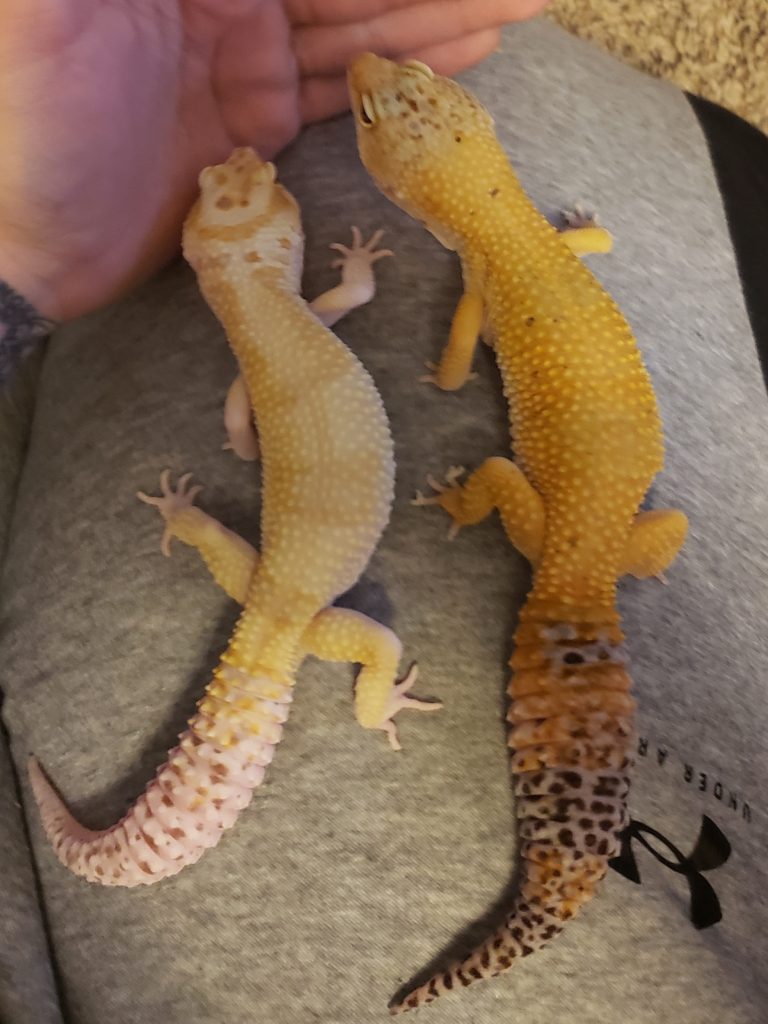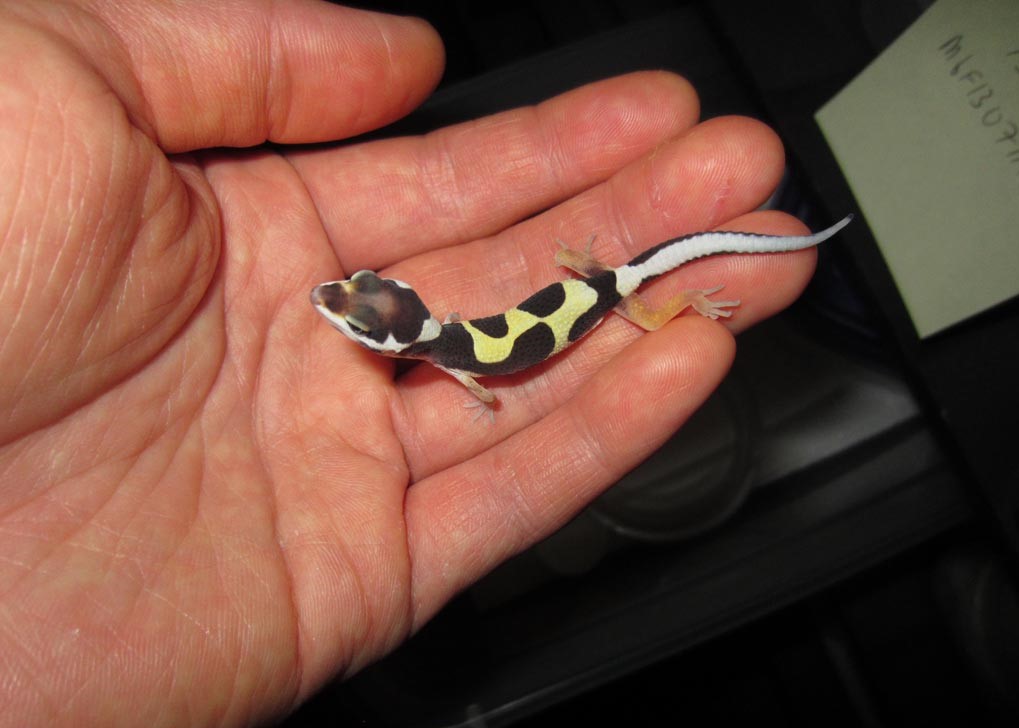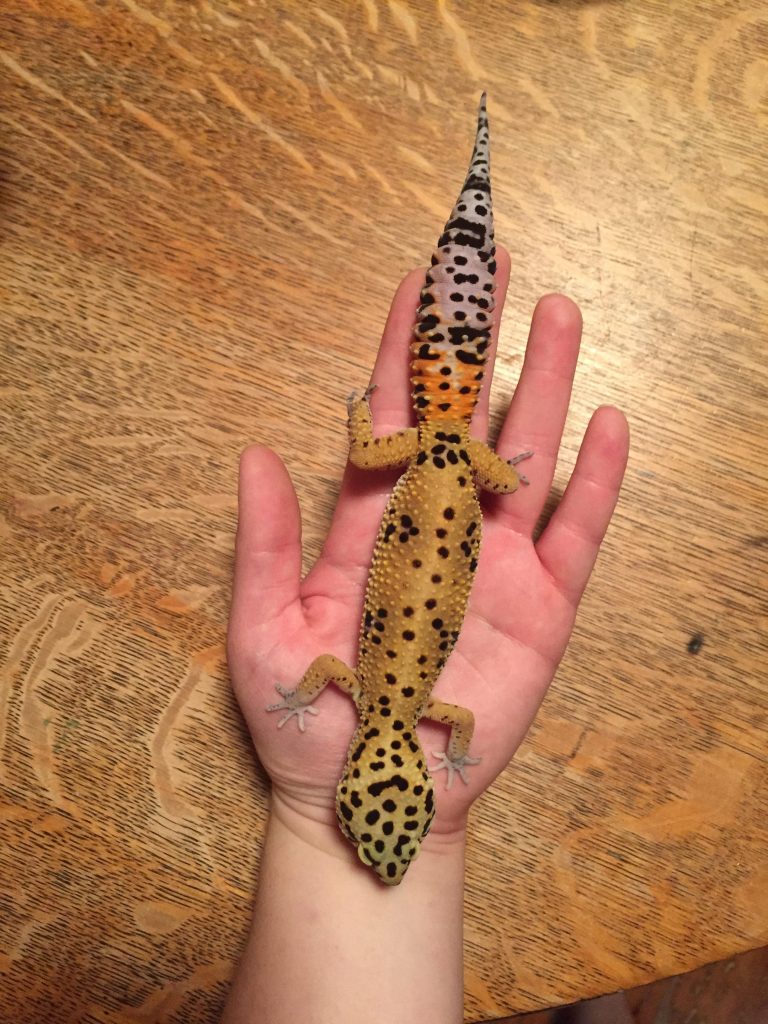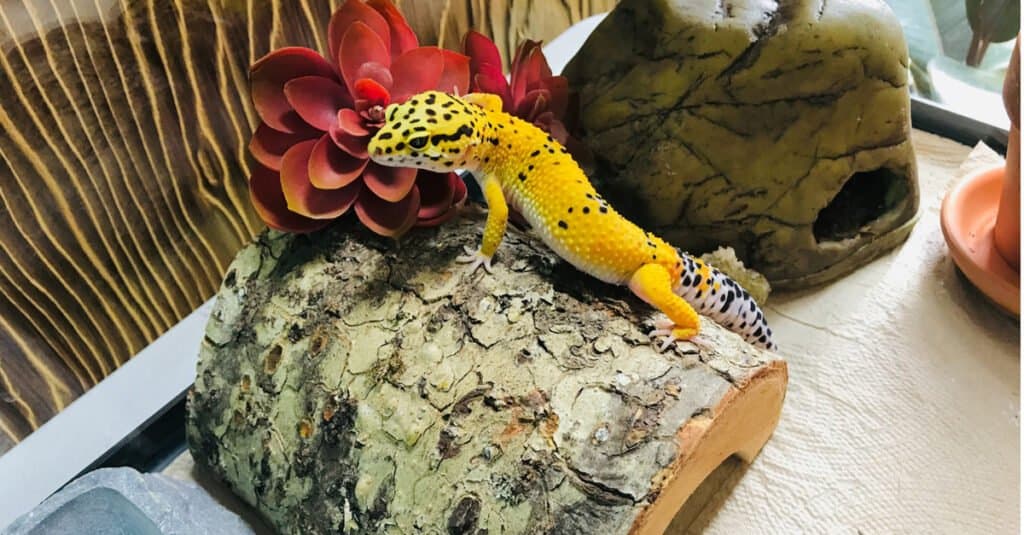It is not easy to choose the ideal pet for yourself and it is not easy to take care of all kinds of pets either. However, if you want to be a reptile pet parent, leopard geckos should be your first choice.
Your new scaly friend will be small and low-maintenance. Leopard geckos typically only live around 20 years, you should be ready for how big these lizards get.
Depending on the type of leopard gecko, and some other factors, these reptiles grow. Wondering how big do leopard geckos get? Or want to make sure your leopard gecko grows healthily?
Keep on reading to know how leopard gecko make great pets.
Leopard Gecko Length and Weight: How Big Do Leopard Geckos Get?

You gotta figure out how big your lizard will get to make sure you get the right sized enclosure for it. On average, your pet gecko can grow up to 8 inches long and weigh around 7.9 inches from the tip of their curious snouts to the graceful end of their tails. This differs from male to female and hatchling to fully grown geckos.
Are Male Leopard Geckos Bigger Than Female Leopard Geckos?

When it comes to gender differences, male and female cannot only be separated by their genitals, but there sizes varies. When a female leopard gecko is all grown up at 12 months, it can get as big as 8 inches.
Comparatively, male geckos are larger than the female ones and can be larger up to 11 or 10 inches long. The male leopard gecko have a wider tail base, broader heads, bulkier body and thicker necks.
The men seem to be winning again when it comes to weight right now. Males often flaunt their muscular physique while weighing 60 to 80 grams.
Conversely, the females parade at a more delicate 50–70 grams, saving their energies for some serious egg-making.
Adding to their size from the nose to the tail, male geckos have a V-shaped row of pre-anal pores and post-anal swellings. They go around leaving their scented mark on the world.
How Big Are Hatchling Leopard Geckos and Adult Leopard Geckos?

Baby leopard geckos is usually seen in the adorable size of 3 to 4 inches in length and around 2 to 5 grams in weight just after hatchling.
These tiny lizards grows rapidly up into a juvenile in no time! After two months of being hatched, these juvenile geckos are around 5 inches long and 15 to 25 grams in weight for 2 to 7 months.

Growth slows down after the first two stages of life, but these little ones are yet to turn into their maximize size. They turn into a sub- adult size aorund 7 to 8 months old.
Your gecko should weigh between 30 to 40 grams and measure approximately 6 to 7 inches long at this age. If you bought an enclosure meant to be for your baby gecko, this is probably the time to change that.
Even though a tiny 10 gallon enclosure would be perfect for your little gecko, but as they are not little anymore, sub adults and adults must have at least a 20 gallon free to feel comfortable.
You can finally see your adorable little lizard as a grown up when they are at least 12 months old for females and 6 months old for males.
Males must measure around 7 to 8 inches in length and weigh 50+ grams, whereas adult females must weight around 45 grams.
However, wait before you rush to breed them. Leopard Geckos should not be bred until they’re at least 18 months old and weigh at least more than 60 grams for their own safety as sexual maturity is yet to develop.
Encouraging Healthy Leopard Gecko’s Growth: Factors To Consider
1. Poor leopard gecko Habitat Conditions

Do not make your pet leopard gecko suffer in an enclosure of incorrect size. The enclosure must be big enough for it to move around freely and yet small enough for it to not get lost as a baby.
Make sure your reptile has enough place for hiding and getting some privacy and security, otherwise that little guy might get insecure which can affect badly to its mental health and slowing down his growth.
2. Inaccurate Light, Humidity, and Temperatures
Leopard geckos typically are sensitive creatures, who needs to be in the perfect light, temperature and humidity in their enclosure.
To avoid having too much or too little light during the day, they require 10 to 12 hours of light every other day. If not, it can cause the circadian rhythm of your reptile to be disturbed.
This may stress the gecko out, decreasing its appetite, which will affect its growth.
If you want to follow the pathway of the right leopard gecko care you need to know that for proper digestion, these reptiles need heat, so it is a must to provide a proper temperature in the leopard gecko’s enclosure.
Temperature gradient should range from 27-29 degree Celsius. The basking ares should be in a temperature slightly higher of 35 degree Celsius.
Optimal humidity levels in the enclosure are 30%-40%. Anywhere above or below this range of humidity puts your leopard gecko at danger for respiratory disease and skin infections.
Leopard geckos also will have the affect on their appetite and thus their growth.
3. Wrong Substrate
The humidity in your gecko’s living space could be impacted by the wrong substrate. If you use the right reptile substrates, such as reptile carpets, shredded coconut fiber, and shredded barks, they will provide the appropriate humidity for healthy growth and help preserve moisture.
4. Parasites
Leopard geckos are not safe from parasites either. When parasites attack these reptiles, they often get diarrhea, severe weight loss and reduced growth.
5. Metabolic Bone Disease (MBD)
In a captive leopard gecko’s body, Metabolic Bone Disease is caused by a calcium deficiency in their body. The low calcium levels in their bodies lead to low skeletal development and rapid weight loss for them.
Ways to r prevent the disease is to provide your scaly friend with UVB lighting, calcium-rich foods, supplements, and vitamins.
6. Bullying
If you have multiple leopard geckos living in the same place, especially male, bullying is a big problem. These captive geckos may fight over food, water or hiding spots, leading to the lost one feeling depressed and deprived.
They might develop a sense of inferiority and feel insecure about themselves. Only way to prevent this is to sometimes separate your geckos into different housings.
7. Tail Healing
As your gecko grows up, at one point it drops its tails. You will notice how there is a declining in its growth. That is because most of the nutrients it consumes is going to the cause of repairing its tail.
When Do Leopard Geckos Stop Growing? What is the full size?
A leopard Gecko is considered to be mature at the age of 10-12 months old, but we can never call them fully grown until they are 18-20 months old.
They cannot be called sexually matured even after they are fully grown because the main factor of that is their weight. Leopard geckos should only be bred only once they weigh 35-45 grams, no matter how old they are.
If by any chances they weigh that much before they are 12 months old, female geckos should not be let to be bred as producing and laying eggs can be very hard on their bodies and their bodies need to be strong, rigid and healthy enough for that.
Conclusion
Leopard geckos are super low-maintenance reptiles. They are not picky eaters even if they are super giant leopard geckos.
Just be careful with their diet and provide them with the ideal living conditions, and leopard geckos can live up to 20 years growing in the proper speed.
Neither would housing them take away half of your house, they are placid and quite lazy, they like to stay in a place thus not a huge enclosure is needed for them.
However, if you don’t put proper attention, poor nutrition, lack of substrates and hiding spots can affect your scaly friend’s growth and health vastly.



